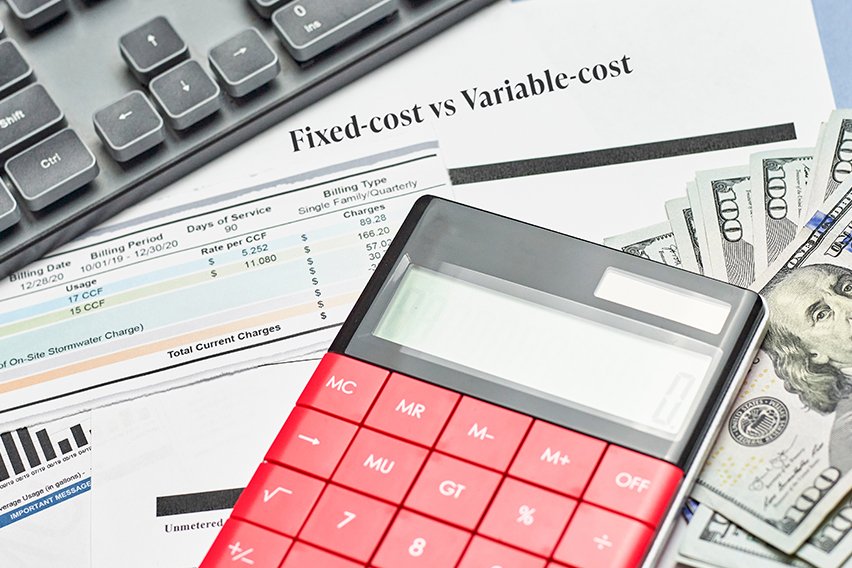How to Calculate Retained Earnings: Formula and Example

A company’s retained earnings refer to the amount of net income (or loss) accumulated since the beginning of operations minus all dividends distributed to shareholders. Undistributed earnings are retained for reinvestment back into the business, such as for inventory and fixed asset purchases or paying off liabilities. A negative balance in the retained earnings account is called an accumulated deficit.
In this guide, we’ll explain what retained earnings are, their importance as a connection between a company’s balance sheet and income statement, their role in determining a company’s profitability and financial health, and more.
Key Takeaways
- Retained earnings are the accumulated amount of net income the company retains after paying dividends to its stakeholders.
- Retained earnings are used for reinvestment in the business, such as through research and development, buying new equipment, paying off debts, or anything else that will help the company grow.
- To calculate retained earnings, you’ll need the ending balance of retained earnings for the prior period, your net income for the current period, and the amount paid in dividends to shareholders.
- Retained earnings is a permanent account that shows the company’s accumulated net earnings to date.
- Accounting software can make it easier to calculate retained earnings and generate financial statements.
Table of Contents
- What Are Retained Earnings?
- Retained Earnings Formula
- How To Calculate Retained Earnings
- Retained Earnings Calculation Example
- How To Calculate Retained Earnings on a Balance Sheet
- How Do You Prepare a Retained Earnings Statement?
- How To Interpret Retained Earnings
- Automate Expense Tracking with Ease with FreshBooks
- Frequently Asked Questions
What Are Retained Earnings?
Retained earnings, also known as RE, refer to the total amount of profit a business is left with to reinvest after paying shareholder dividends. These funds can be used for anything the business chooses, including research and development, buying new equipment, or anything else that will lead to growth for the company.
Beyond this, retained earnings are also a useful figure for linking the income statement and balance sheet. This is because they’re recorded under shareholders’ equity.

Retained Earnings Formula
The formula for Retained Earnings posted on a balance sheet is:
Retained Earnings = Beginning Period Retained Earnings + Net Income/Loss – Cash Dividends – Stock Dividends (Or Property Dividends)
Here’s an explanation of the terms used in the retained earnings formula:
- Beginning Period Retained Earnings: The retained earnings balance at the end of the accounting period (after net income is closed to RE)
- Net Income/Loss: The amount of profit (or loss) generated by a company during a period (i.e., the ‘bottom line’ on your income statement)
- Cash Dividends: A cash payment made by a company to its shareholders
- Stock Dividends: A dividend in the form of stock made by a company to its stockholders
How To Calculate Retained Earnings
Calculating your company’s retained earnings can be done in just 3 steps: determining your beginning retained earnings balance from the prior period, determine net income/loss for current period, and then calculating and subtracting dividends paid in the current period.
1. Determine Beginning Retained Earnings Balance
Because RE is calculated to date, they accumulate from one period to the next. This means that in order to calculate RE for the current accounting period, you’ll need to know your ending balance from the prior period. This ending balance is found in the stockholders’ equity section of the balance sheet as of the end of the prior accounting period.
2. Determine Net Income/Loss for Current Period
Next, look at your income statement (also known as the profit and loss statement) for the current period to find your net income (or loss). This essentially refers to the business’ net profit generated during the period, after subtracting business expenses from your revenue.
3. Calculate and Subtract Dividends Paid to Shareholders in Current Period
Assuming your business pays its shareholders dividends (stock or cash), you’ll need to factor those into your calculations. Subtract the amount paid in dividends in the current accounting period from your retained earnings balance from that same period.
Retained Earnings Calculation Example
To better explain the retained earnings calculation, we’ll use a realistic retained earnings example. Let’s say that a marketer named Elena is looking to expand her agency, but needs to provide some information about retained earnings to attract new investment.
Elena’s ending retained earnings for the prior period were $85,000. Her net income for the current period is $20,000, and she paid $8,000 in dividends. To calculate her retained earnings, she would do the following calculation:
$85,000 + $20,000 – $8,000 = $97,000
This means that Elena currently has $97,000 in retained earnings, a fair amount to reinvest in her business, and a good sign of future growth to her potential investors.
How To Calculate Retained Earnings on a Balance Sheet
Retained Earnings are listed on a balance sheet under the shareholder’s equity section at the end of each accounting period. To calculate Retained Earnings, the beginning Retained Earnings balance is added to the net income or loss and then dividend payouts are subtracted.
How Do You Prepare a Retained Earnings Statement?
In an accounting cycle, after a trial balance and adjusting and closing entries are completed, and the income statement is generated, we are ready to prepare the Statement of Retained Earnings. This statement shows changes in the accumulated RE during the period.
Here are the steps to create a Statement of Retained Earnings:
Step 1: Prepare the Statement Heading
There should be a three-line header on a Statement of Retained Earnings. The first line is the name of the company, the second line labels the document “Statement of Retained Earnings” and the third line states the year “For the Year Ended XXXX”.
Step 2: State the Balance From the Prior Year
The first item listed on the Statement of Retained Earnings should be the beginning balance, which is the ending balance of retained earnings from the prior year. This amount can be found on the previous year’s balance sheet.
Hypothetically, let’s say the ending balance in retained earnings from the prior period is $30,000. The first line of the Statement of Retained Earnings would look like this:
- Retained Earnings, beginning balance: $30,000
Step 3: Add Net Income From the Income Statement
Let’s say that the net income of your company for the current period is $15,000. That is the first item added to retained earnings.
The Retained Earnings balance calculation will look like this:
- Retained Earnings, beginning balance: $30,000
- Add Net Income: $15,000
- Balance: $45,000
If the company is experiencing a net loss on its Income Statement, then the net loss is subtracted from the existing retained earnings.
Step 4: Subtract Dividends Paid Out to Investors
If your company pays dividends, you subtract the amount of dividends your company pays out of your retained earnings. If it does not pay dividends, then you subtract $0. Let’s say your company’s dividend policy is to pay 50 percent of its net income out to its investors. In this example, $7,500 would be paid out as dividends and subtracted from the current total.
- Retained Earnings, beginning balance: $30,000
- Add Net Income: $15,000
- Less Dividends Paid: $7,500
- Ending balance: $37,500
Declared dividends are a debit to the retained earnings account whether paid or not.
Step 5: Prepare the Final Total
Now, if you paid out dividends, subtract them and total the ending balance. This is the new balance in the retained earnings account and it will be displayed on the balance sheet as of the last day of the current accounting period.
- Retained Earnings, beginning balance: $30,000
- Add Net Income: $15,000
- Subtract Dividends Paid: $7,500
- Retained Earnings, ending balance: $37,500
This completes the Statement of Retained Earnings.
How To Interpret Retained Earnings
When interpreting the retained earnings of a company, there are 5 key factors to consider:
Company Life Cycle
A history of lower retained earnings could indicate that the company is in a mature, low-growth stage since there are fewer ways for the company to reinvest its earnings. This may indicate that the company doesn’t need to invest very much additional capital to continue to be profitable, which often means the extra funds are distributed to shareholders through dividends.
Profit Margins
For growth-focused companies in highly competitive industries, you may see higher retained earnings. This is because more capital needs to be allocated to the business in order for it to continue to grow, and less is paid out in dividends.
Growth Potential
Lower retained earnings can indicate that a company is more mature, and has limited opportunities for further growth, but this isn’t necessarily a negative. Retained earnings being low indicates that much of the company’s profits are paid out to shareholders in dividends. For newer companies looking to expand, it’s common to see higher retained earnings, since they will focus on reinvesting profit into the business.
Dividend Policy
Different companies have different strategies regarding their dividends. A company that routinely gives dividends to shareholders will tend to have lower retained earnings, and vice versa.
Industry Cyclicality
Cyclical industries (industries affected by the cycles of the economy in general, such as automotive, aviation, and construction), tend to have higher retained earnings since their management wants a healthy reserve of money in case of an economic downturn.
Automate Expense Tracking with Freshbooks with Ease
Understanding retained earnings is essential for anyone involved in business. Whether you’re trying to strike a balance between paying dividends and investing in your company or looking at a company’s retained earnings history to guide investment decisions, this is a key metric for determining profitability and growth opportunities.
If you’re looking for support with the financial statements needed to track retained earnings, FreshBooks has your back. With automated accounting solutions, expense tracking, and detailed financial reporting, FreshBooks is here to help business owners take the guesswork out of their financials. Try FreshBooks for free!

FAQs About Retained Earnings Calculation
Are you still wondering about calculating and interpreting retained earnings? Here are answers to a few commonly asked questions.
What is the difference between retained earnings and revenue?
Revenue is the income a company generates from business operations during a period, while retained earnings are the accumulated net income that was not paid out as dividends to shareholders to date.
What is the difference between equity and retained earnings?
Equity refers to the total amount of a company’s net assets held in the hands of its owners, founders, partners, and shareholders (residual ownership interest). Retained earnings refer to the total net income or loss the company has accumulated over its lifetime (after dividend payouts are subtracted).
What is the formula for the retained earnings ratio?
The retained earnings (or retention) ratio refers to the amount of earnings retained by the company compared to the amount paid to shareholders in dividends. It’s essentially a comparison between the money earmarked for reinvestment and the money paid to investors in dividend payments.
What are the limitations of retained earnings?
Retained earnings for a single period can reveal trends in the company’s reinvestment, but they don’t tell you how those funds are used, or what the return on investment is. Looking at retained earnings can be useful, but they’re more valuable when observed over a longer period of time.
About the author
Sandra Habiger is a Chartered Professional Accountant with a Bachelor’s Degree in Business Administration from the University of Washington. Sandra’s areas of focus include advising real estate agents, brokers, and investors. She supports small businesses in growing to their first six figures and beyond. Alongside her accounting practice, Sandra is a Money and Life Coach for women in business.
RELATED ARTICLES


 What is Indirect Labor Cost?
What is Indirect Labor Cost? What is Journalizing Transactions?
What is Journalizing Transactions? What Does an Accountant Do?
What Does an Accountant Do? Accounting for Loans Receivable: Here’s How It’s Done
Accounting for Loans Receivable: Here’s How It’s Done Balance Sheet: Definition, Components, and Example
Balance Sheet: Definition, Components, and Example Fixed vs. Variable Costs: What’s the Difference
Fixed vs. Variable Costs: What’s the Difference